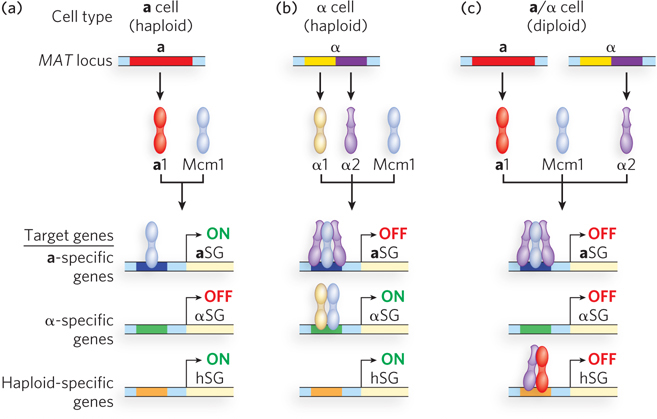
Combinatorial control of the yeast mating- d- d- 1- d- 2-